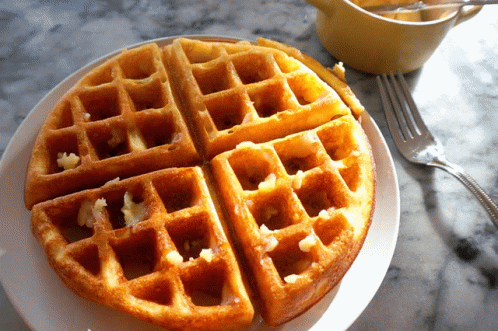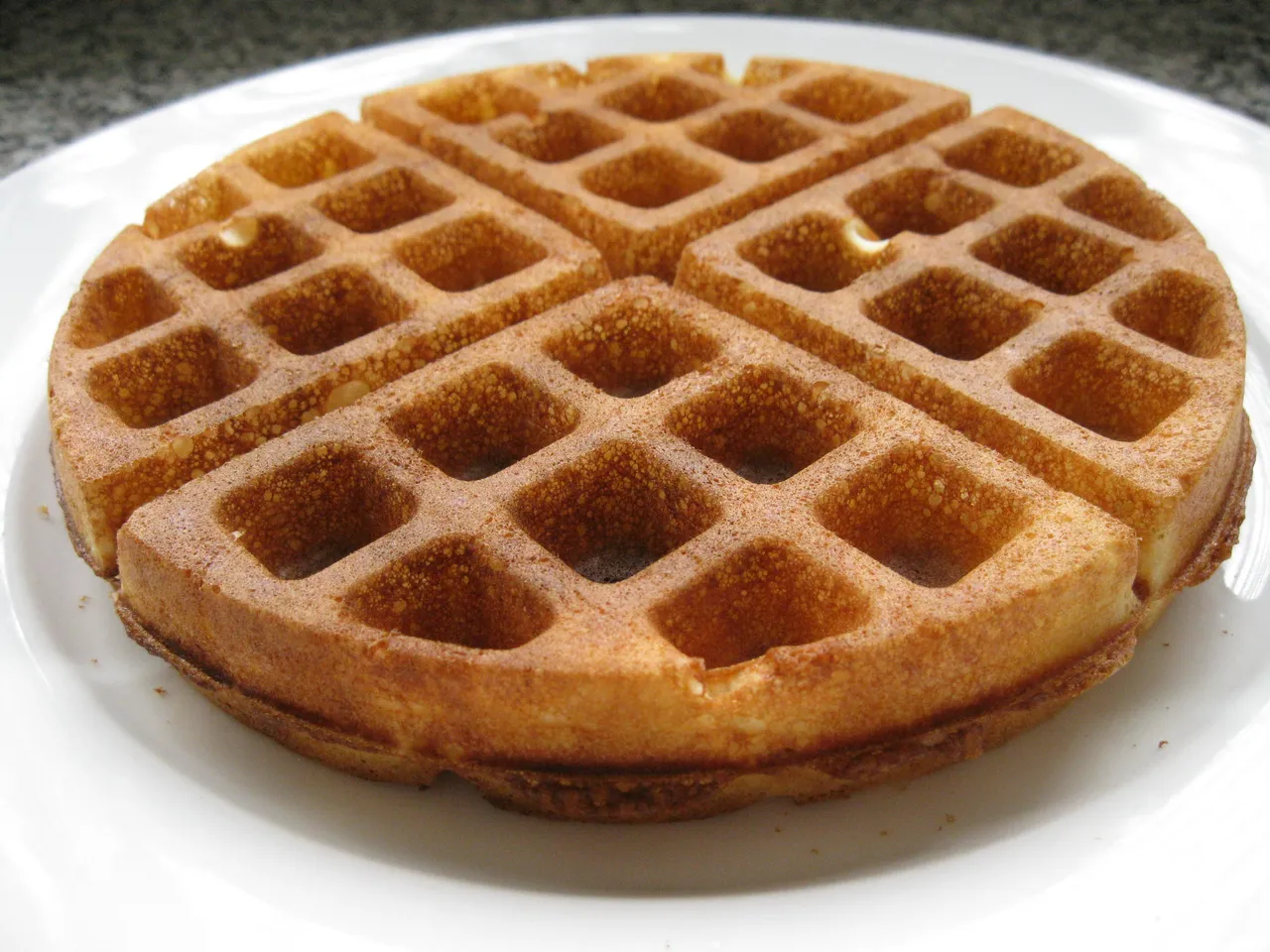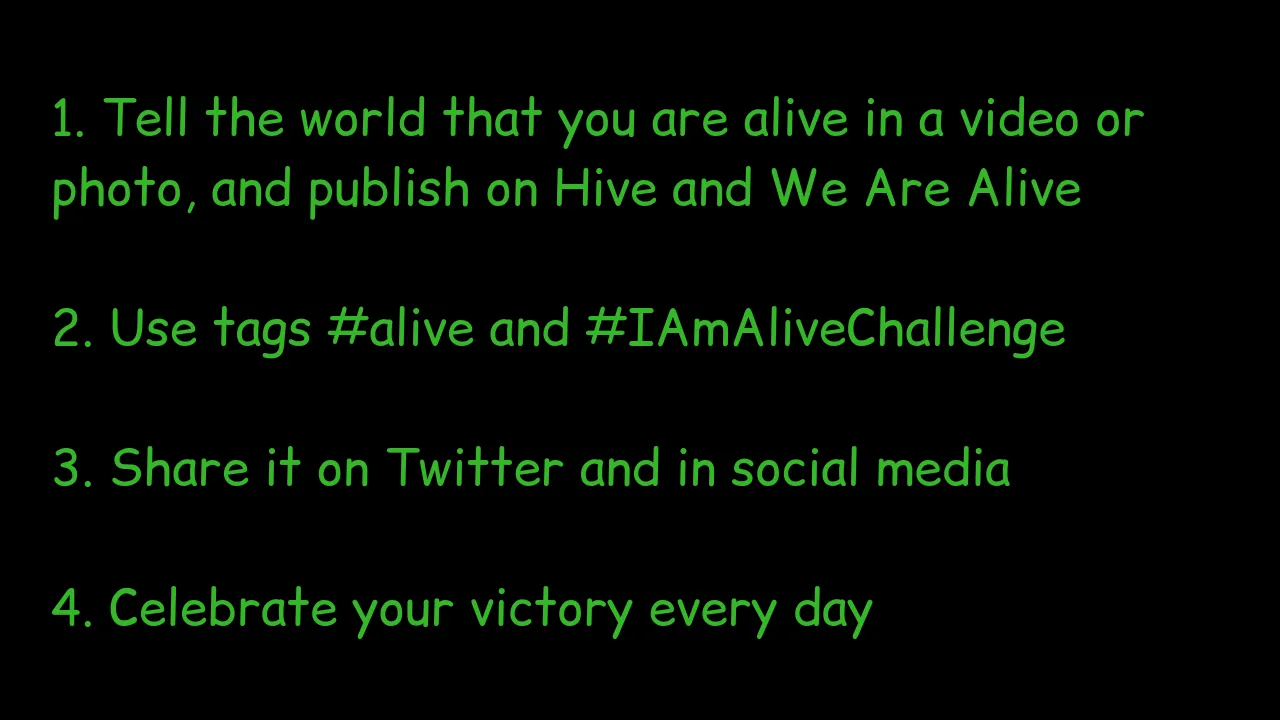Hello, I'm having a very calm Monday. This March 11th things are going calmly, just the way I like the days in my normal #life. Although my mind is a little slow, and it took me quite a few hours to read something I had pending. Luckily, there is plenty of coffee. In view of all this, I want to take the opportunity to register early for the day.
Thanks to how calm my day is, there isn't much of my personal stuff to talk about. That is why I am going to focus on the anniversary of the #History that I read in today's list. The celebration that caught my attention is about #food, and it is a preparation based on wheat (in most of its recipes) that enjoys good popularity in different parts of the world, waffles, although it is a focused celebration in a specific type of this dish.. It's 'Oatmeal and Walnut Waffles Day'.
+++
Thanks to how calm my day is, there isn't much of my personal stuff to talk about. That is why I am going to focus on the anniversary of the #History that I read in today's list. The celebration that caught my attention is about #food, and it is a preparation based on wheat (in most of its recipes) that enjoys good popularity in different parts of the world, waffles, although it is a focused celebration in a specific type of this dish.. It's 'Oatmeal and Walnut Waffles Day'.
+++
Hola, Estoy teniendo un Lunes muy tranquilo. Este 11 de marzo las cosas están transcurriendo con calma, tal como me gustan los días e mi #vida normal. Aunque tengo la mente un poco lenta, y me ha costado bastantes horas leer una cosa que tenía pendiente. Por suerte, hay bastante café. En vista de todo esto, quiero aprovechar para hacer temprano el registro del día.
Gracias a lo calmado que es mi día, no hay mucho de mis asuntos personales que comentar. Por eso es que me voy a enfocar en la efeméride de la #Historia que leí en el listado de hoy. La celebración que me llamó la atención es del tema de la #comida, y es una preparación con base en trigo (en la mayoría de sus recetas) que goza de buena popularidad en distintas partes del mundo, los waffles, aunque sea una celebración enfocada en un tipo específico de este platillo.. Es el ‘Día de los Waffles de Avena y Nueces’.
+++
Gracias a lo calmado que es mi día, no hay mucho de mis asuntos personales que comentar. Por eso es que me voy a enfocar en la efeméride de la #Historia que leí en el listado de hoy. La celebración que me llamó la atención es del tema de la #comida, y es una preparación con base en trigo (en la mayoría de sus recetas) que goza de buena popularidad en distintas partes del mundo, los waffles, aunque sea una celebración enfocada en un tipo específico de este platillo.. Es el ‘Día de los Waffles de Avena y Nueces’.
+++

Image's Source - Fuente de la Imagen
I am not a regular consumer of #waffles, but I found data that I found interesting, such as the different names they can have, such as: Waffle, waffe, wafre, wafer, wâfel, waufre, iauffe, gaufre, gauffre, wafe, waffel, wåfe, wāfel, wafe, vaffel, waffeln, or våffla. All of these names depend on the country where different recipes for this dish originate. In addition to this, I found it surprising that the origin of this popular breakfast ingredient in several countries had an origin related to Wheat Wafers, and that it traced its roots back to medieval cuisine.
One detail to mention is that what has something in common between waffles and wafers is that they are cooked by placing the (liquid) dough between two cooking surfaces, cooking both sides at the same time. If this is the case, then the origin of this dish should go back to ancient Greece, during the period of Hellenic expansion, which is where we could locate a recipe that has this characteristic.
However, the ingredients are the things that make the difference. Let's go a few centuries later, in the 14th century AD, there is one of the first records in Europe of a recipe for a preparation that can be considered the ancestor of waffles. And it is not that it can be properly considered a waffle like the current ones, due to the lack of leavening agent, but it is related to the use of metal molds to cook it between two metal plates.
+++
One detail to mention is that what has something in common between waffles and wafers is that they are cooked by placing the (liquid) dough between two cooking surfaces, cooking both sides at the same time. If this is the case, then the origin of this dish should go back to ancient Greece, during the period of Hellenic expansion, which is where we could locate a recipe that has this characteristic.
However, the ingredients are the things that make the difference. Let's go a few centuries later, in the 14th century AD, there is one of the first records in Europe of a recipe for a preparation that can be considered the ancestor of waffles. And it is not that it can be properly considered a waffle like the current ones, due to the lack of leavening agent, but it is related to the use of metal molds to cook it between two metal plates.
+++
No soy un consumidor asiduo de los #waffles, pero encontré datos que me parecieron interesantes, tal como los distintos nombres que puede tener, tales como: Gofre, waffe, wafre, wafer, wâfel, waufre, iauffe, gaufre, gauffre, wafe, waffel, wåfe, wāfel, wafe, vaffel, waffeln , o våffla. Todos estos nombres dependen del país en donde se originan distintas recetas de este platillo. Además de esto, me pareció sorprendente que el origen de este popular ingrediente de desayuno en varios países, tuviera un origen emparentado con las Obleas de trigo, y que hundiera sus raíces hasta la cocina medieval.
Un detalle a comentar, es que lo que hace tener algo en común entre los waffles y las obleas, es que se cocinan colocando la masa (líquida) entre dos superficies de cocción, cocinando ambas caras a la vez. Si es por esto, entonces el origen de este platillo se debería remontar a la antigua Grecia, durante el periodo de expansión helénica, que es donde podríamos ubicar una receta que tiene esta característica.
Sin embargo, los ingredientes son cosas que hacen la diferencia. Vamos unos siglos más adelante, en el siglo XIV d.C., se tiene uno de los primeros registros en Europa de una receta de una preparación que se puede considerar antecesor de los waffles. Y no es que se le pueda considerar propiamente un waffle como los actuales, por la carencia de leudante, pero si se relaciona por el uso de los moldes de metal para cocerlo entre dos placas de metal..
+++
Un detalle a comentar, es que lo que hace tener algo en común entre los waffles y las obleas, es que se cocinan colocando la masa (líquida) entre dos superficies de cocción, cocinando ambas caras a la vez. Si es por esto, entonces el origen de este platillo se debería remontar a la antigua Grecia, durante el periodo de expansión helénica, que es donde podríamos ubicar una receta que tiene esta característica.
Sin embargo, los ingredientes son cosas que hacen la diferencia. Vamos unos siglos más adelante, en el siglo XIV d.C., se tiene uno de los primeros registros en Europa de una receta de una preparación que se puede considerar antecesor de los waffles. Y no es que se le pueda considerar propiamente un waffle como los actuales, por la carencia de leudante, pero si se relaciona por el uso de los moldes de metal para cocerlo entre dos placas de metal..
+++

Image's Source - Fuente de la Imagen
But it took until the following century for a real distinction to be made between waffles and wheat wafers (used as part of religious rituals, in the form of a Host). The difference is beyond the issue of the waffles being larger in diameter, the real difference is in the addition of yeast in the waffle batter.
Taking another time jump, or ellipsis, to the 17th century, the popularity of this dish in Western Europe is well established. During the 18th century, the expansion of sugar cane crops occurred in the Caribbean, which reduced the price of an important ingredient for this dish, and made it even more popular. It is in this century that the first record of the name waffle appears in the Anglo-Saxon language.
This language detail is relevant, because the origin of the waffle festival, and also today's celebration (which is for a particular type of waffle), originates in the United States. Although, at the beginning, it must be said that the word that gives the name has roots in a Dutch word. And in the case of America, this food is related to the Dutch immigrant population that settled in what is (currently) part of New York.
Gee, I better summarize things, because this is going on too long. I am going to point out that within the waffle recipe, during the late 20th century, a recipe was proposed that replaced the flour in the dish with ingredients that were considered healthier, which in this case are nuts and oats.
+++
Taking another time jump, or ellipsis, to the 17th century, the popularity of this dish in Western Europe is well established. During the 18th century, the expansion of sugar cane crops occurred in the Caribbean, which reduced the price of an important ingredient for this dish, and made it even more popular. It is in this century that the first record of the name waffle appears in the Anglo-Saxon language.
This language detail is relevant, because the origin of the waffle festival, and also today's celebration (which is for a particular type of waffle), originates in the United States. Although, at the beginning, it must be said that the word that gives the name has roots in a Dutch word. And in the case of America, this food is related to the Dutch immigrant population that settled in what is (currently) part of New York.
Gee, I better summarize things, because this is going on too long. I am going to point out that within the waffle recipe, during the late 20th century, a recipe was proposed that replaced the flour in the dish with ingredients that were considered healthier, which in this case are nuts and oats.
+++
Pero hubo de esperar hasta el siglo siguiente para que se produjera una distinción real entre los waffles y las obleas de trigo (usadas como parte de rituales religiosos, en forma de Hostia). La diferencia está más allá del asunto de que los waffles son de mayor diámetro, la diferencia real está en el agregado de levadura en la masa para el waffle.
Dando otro salto de tiempo, o elipsis, hasta el siglo XVII, la popularidad de este platillo en Europa occidental está bien establecida. Durante el siglo XVIII, ocurre la expansión de los cultivos de caña de azúcar en el Caribe, con esto se reduce el precio de un importante ingrediente para este platillo, y se populariza aún más. Es en este siglo que aparece el primer registro del nombre waffle en el lenguaje anglosajón.
Este detalle del idioma es relevante, porque el origen de la fiesta de los waffles, y también la celebración de hoy (que es para un tipo particular de waffle), tienen su origen en Estados Unidos. Aunque en inicio, hay que decir que la palabra que da el nombre, tiene raíz en una palabra holandesa. Y en el caso de América, esta comida tiene relación con la población emigrante holandesa que se estableció en lo que (actualmente) es parte de New York.
Caramba, es mejor que resuma las cosas, porque esto se extiende demasiado. Voy a señalar que dentro de la receta del waffle, durante finales del siglo XX, se planteó una receta que sustituyera la harina del platillo con ingredientes que se juzgaran más saludables, que en este caso son las nueces y la avena.
+++
Dando otro salto de tiempo, o elipsis, hasta el siglo XVII, la popularidad de este platillo en Europa occidental está bien establecida. Durante el siglo XVIII, ocurre la expansión de los cultivos de caña de azúcar en el Caribe, con esto se reduce el precio de un importante ingrediente para este platillo, y se populariza aún más. Es en este siglo que aparece el primer registro del nombre waffle en el lenguaje anglosajón.
Este detalle del idioma es relevante, porque el origen de la fiesta de los waffles, y también la celebración de hoy (que es para un tipo particular de waffle), tienen su origen en Estados Unidos. Aunque en inicio, hay que decir que la palabra que da el nombre, tiene raíz en una palabra holandesa. Y en el caso de América, esta comida tiene relación con la población emigrante holandesa que se estableció en lo que (actualmente) es parte de New York.
Caramba, es mejor que resuma las cosas, porque esto se extiende demasiado. Voy a señalar que dentro de la receta del waffle, durante finales del siglo XX, se planteó una receta que sustituyera la harina del platillo con ingredientes que se juzgaran más saludables, que en este caso son las nueces y la avena.
+++

Image's Source - Fuente de la Imagen
Replacing wheat flour with ground nuts or oat flour is possible and can also reduce the negative impacts that the dish may have.
Oh! I'm feeling groggy all of a sudden. I apologize, and I say goodbye for today, wishing you that you are well, that the discomfort goes away and that we can read again on another occasion.
+++
Oh! I'm feeling groggy all of a sudden. I apologize, and I say goodbye for today, wishing you that you are well, that the discomfort goes away and that we can read again on another occasion.
+++
El sustituir la harina de trigo por nueces molidas o con harina de avena, es algo posible y que además puede reducir los impactos negativos que pueda tener el platillo.
¡Vaya! Me estoy sintiendo atontado de repente. Me disculpo, y me despido por hoy, deseándote que tú estés bien, que se me pase el malestar y que nos podamos lee de nuevo en otra oportunidad.
+++
¡Vaya! Me estoy sintiendo atontado de repente. Me disculpo, y me despido por hoy, deseándote que tú estés bien, que se me pase el malestar y que nos podamos lee de nuevo en otra oportunidad.
+++
This post, on the #blockchain #Hive, is in the We Are Alive Tribe community, it's part of the #IAmAliveChallenge
This challenge is an initiative of @flaxz
The 4 points to join the #IAmAliveChallenge, includes using the hashtag #alive to post to We Are Alive Tribe and earn ALIVE tokens.
This challenge is an initiative of @flaxz
The 4 points to join the #IAmAliveChallenge, includes using the hashtag #alive to post to We Are Alive Tribe and earn ALIVE tokens.
Esta publicación, en la #blockchain #Hive, está en la comunidad We Are Alive Tribe, es parte del #IAmAliveChallenge
Este desafío es iniciativa de @flaxz
Los 4 puntos para unirte al #IAmAliveChallenge, incluyen el uso de la etiqueta #alive para publicar en We Are Alive Tribe y ganar tokens ALIVE.
Este desafío es iniciativa de @flaxz
Los 4 puntos para unirte al #IAmAliveChallenge, incluyen el uso de la etiqueta #alive para publicar en We Are Alive Tribe y ganar tokens ALIVE.
